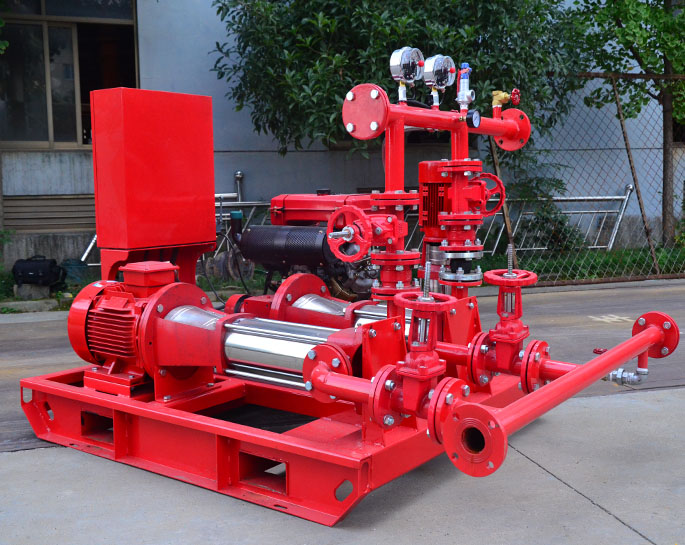Precautions for fire pump installation
Proper installation of fire pumps is crucial to ensure their reliable and effective operation in emergency situations. Here are some precautions to consider during fire pump installation:
-
Compliance with Codes and Standards: Ensure that the fire pump installation adheres to relevant local, national, and international codes and standards, such as the National Fire Protection Association (NFPA) standards, building codes, and manufacturer's guidelines. Compliance with these regulations helps ensure the safety and effectiveness of the fire protection system.
-
Adequate Space and Accessibility: Provide sufficient space around the fire pump for easy access, maintenance, and repair activities. Consider factors such as clearance requirements, ventilation, and proper drainage. Accessibility is essential to facilitate inspections, testing, and maintenance without hindrances.
-
Proper Location: Install the fire pump in a suitable location that meets the specific requirements of the fire protection system. Consider factors such as proximity to water sources, protection from environmental elements, ease of connection to the fire sprinkler system, and accessibility for firefighting personnel.
-
Foundation and Anchoring: Ensure that the fire pump is mounted on a sturdy and stable foundation that can withstand the vibrations and loads generated during operation. The pump should be securely anchored to prevent movement or shifting.
-
Piping and Connections: Follow the manufacturer's guidelines and engineering specifications for the installation of suction and discharge piping, fittings, valves, and connections. Use appropriate materials, such as corrosion-resistant piping, and ensure proper sizing, alignment, and support of the pipes to prevent leaks, pressure losses, or flow restrictions.
-
Electrical Considerations: Engage a qualified electrician to handle the electrical installation of the fire pump. Ensure that the electrical system, including power supply, wiring, controls, and grounding, complies with applicable electrical codes and standards. Consider the use of emergency power sources or backup systems to maintain the operation of the fire pump during power outages.
-
Testing and Commissioning: Once the fire pump is installed, perform comprehensive testing and commissioning to ensure its proper functioning. Conduct flow tests, pressure tests, and functional tests as per the manufacturer's recommendations and regulatory requirements. Document the results of the tests and keep them as part of the system records.
-
Training and Documentation: Provide training to the relevant personnel responsible for operating and maintaining the fire pump. Ensure that they understand the system's operation, control panels, alarms, and emergency procedures. Maintain comprehensive documentation, including installation drawings, equipment manuals, maintenance logs, and testing records, for future reference and compliance purposes.
By following these precautions during fire pump installation, you can enhance the reliability, performance, and longevity of the fire protection system, contributing to the safety of the premises and occupants.


.png)
.png)

.png)


